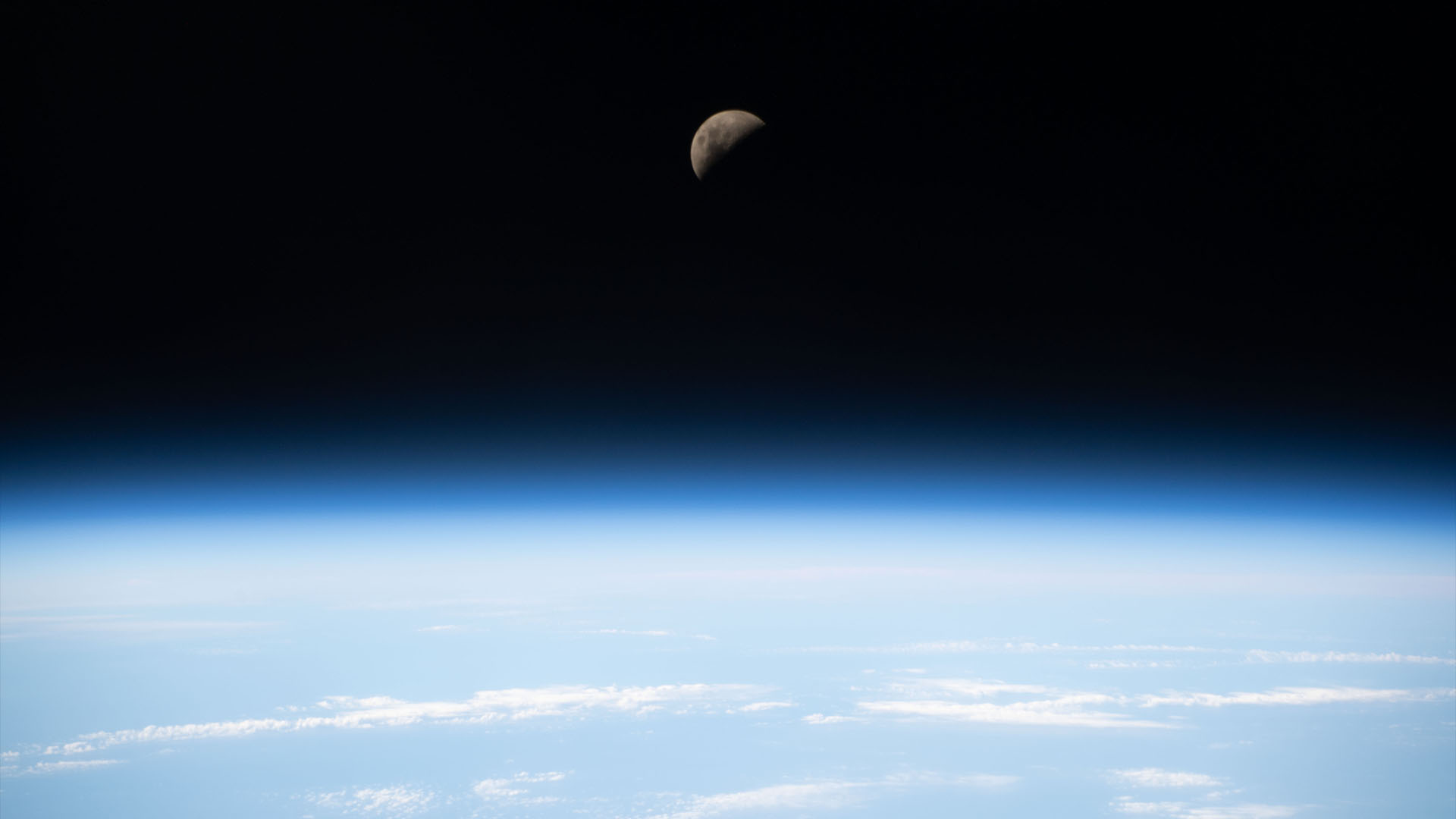Space photo of the week: The moon begins its big eclipse orbit in stunning ISS photo
International Space Station astronauts orbiting 270 miles above Earth have photographed the moon on the cusp of 2024's first "eclipse season."

What it is: The moon reaching its first-quarter phase, as seen from the International Space Station (ISS)
When it was published: March 19, 2024
Where it is: 270 miles (435 kilometers) above the South Atlantic Ocean
Why it's so special: The moon will be eclipsed by Earth in the early hours of March 25. Then, it will totally eclipse the sun on April 8.
This photo of the moon was taken as our satellite reached its first-quarter phase, which occurs about a week after a new moon and a week before a full moon. It was taken from the ISS as it soared nearly 270 miles (435 kilometers) above the South Atlantic Ocean during a very special orbit of the moon.
Monday (March 25) starts 2024's first "eclipse season," the name for one of the two 35-day periods each year when lunar and solar eclipses can occur.
Related: 7 safe ways to view the partial phases of the total solar eclipse on April 8
Get the world’s most fascinating discoveries delivered straight to your inbox.
In the early hours of March 25, the moon will turn full and be eclipsed by Earth. It won't be a perfect alignment, though. If it were, it would be a total lunar eclipse, also known as a Blood Moon. Instead, it will be a penumbral lunar eclipse, during which the moon will move only through Earth's outer shadow, its penumbra.
During the event — which will take place between 12:53 and 5:32 a.m. EDT, peaking at 3:12 a.m. EDT, according to Time and Date — the edge of Earth's shadow will be seen moving across the lunar surface.
If that's a near-miss eclipse, the one that comes at the end of the moon's current orbit will be anything but. On Monday, April 8, the new moon — known as the New Pink Moon this month — will perfectly align with the sun and Earth, totally eclipsing our star. The moment, called syzygy, will cause a central solar eclipse.
All of North America will experience at least a partial solar eclipse, while those within a 115-mile-wide (185 kilometers) path of totality — a projection of the moon's shadow — will experience a total solar eclipse on April 8. Total solar eclipses occur in the same place twice every 366 years, on average, according to new research by NASA.

Jamie Carter is a freelance journalist and regular Live Science contributor based in Cardiff, U.K. He is the author of A Stargazing Program For Beginners and lectures on astronomy and the natural world. Jamie regularly writes for Space.com, TechRadar.com, Forbes Science, BBC Wildlife magazine and Scientific American, and many others. He edits WhenIsTheNextEclipse.com.


